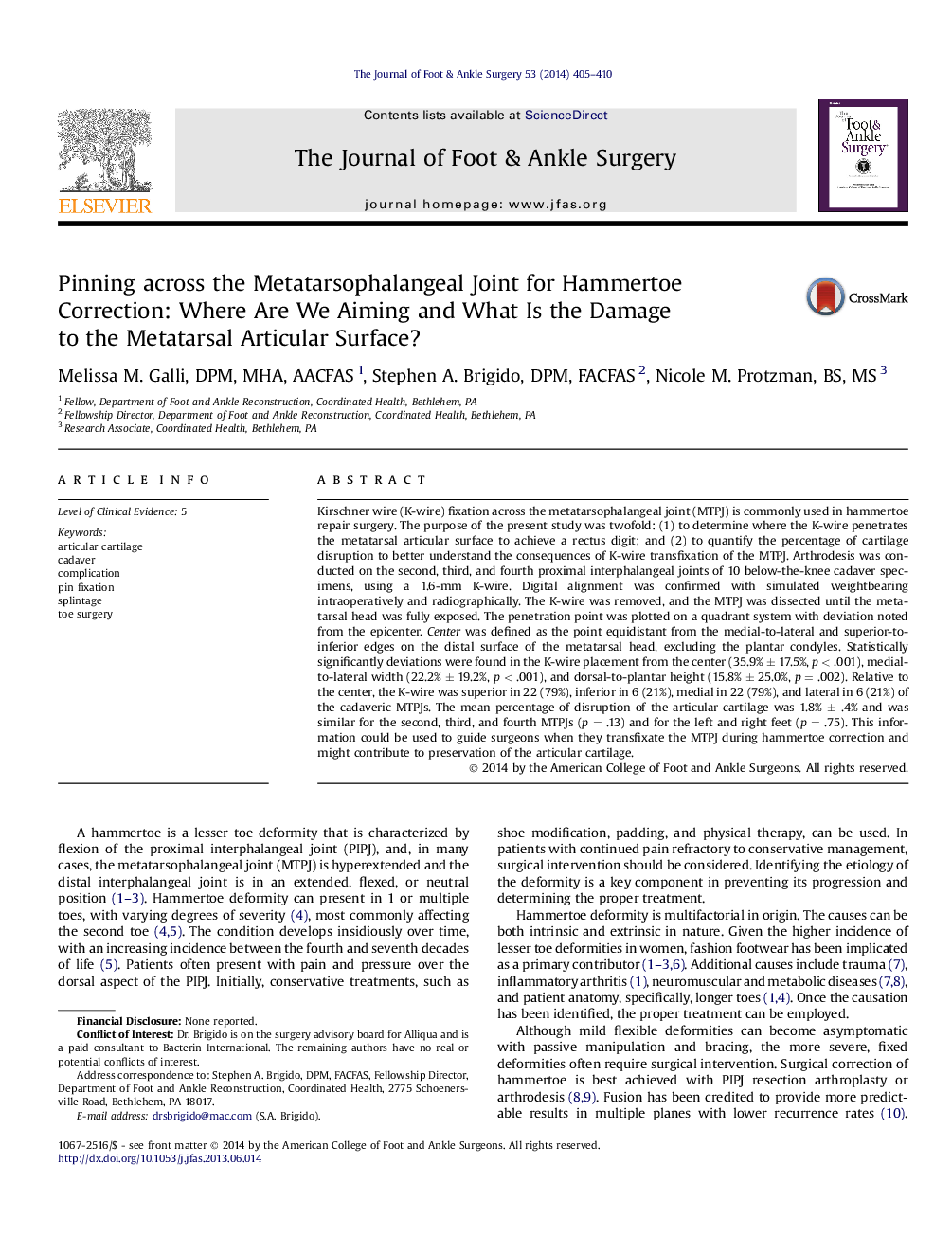| Article ID | Journal | Published Year | Pages | File Type |
|---|---|---|---|---|
| 2713039 | The Journal of Foot and Ankle Surgery | 2014 | 6 Pages |
Kirschner wire (K-wire) fixation across the metatarsophalangeal joint (MTPJ) is commonly used in hammertoe repair surgery. The purpose of the present study was twofold: (1) to determine where the K-wire penetrates the metatarsal articular surface to achieve a rectus digit; and (2) to quantify the percentage of cartilage disruption to better understand the consequences of K-wire transfixation of the MTPJ. Arthrodesis was conducted on the second, third, and fourth proximal interphalangeal joints of 10 below-the-knee cadaver specimens, using a 1.6-mm K-wire. Digital alignment was confirmed with simulated weightbearing intraoperatively and radiographically. The K-wire was removed, and the MTPJ was dissected until the metatarsal head was fully exposed. The penetration point was plotted on a quadrant system with deviation noted from the epicenter. Center was defined as the point equidistant from the medial-to-lateral and superior-to-inferior edges on the distal surface of the metatarsal head, excluding the plantar condyles. Statistically significantly deviations were found in the K-wire placement from the center (35.9% ± 17.5%, p < .001), medial-to-lateral width (22.2% ± 19.2%, p < .001), and dorsal-to-plantar height (15.8% ± 25.0%, p = .002). Relative to the center, the K-wire was superior in 22 (79%), inferior in 6 (21%), medial in 22 (79%), and lateral in 6 (21%) of the cadaveric MTPJs. The mean percentage of disruption of the articular cartilage was 1.8% ± .4% and was similar for the second, third, and fourth MTPJs (p = .13) and for the left and right feet (p = .75). This information could be used to guide surgeons when they transfixate the MTPJ during hammertoe correction and might contribute to preservation of the articular cartilage.
